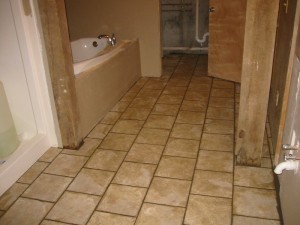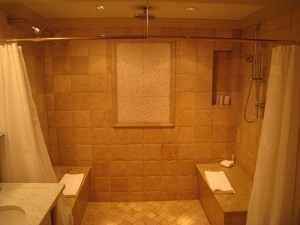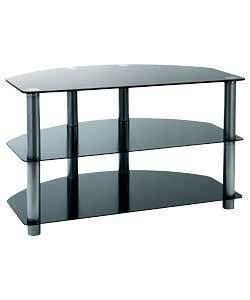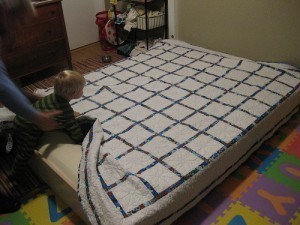Bathroom Tile Dimensions
Tiles make bathrooms hygienic. They make restrooms easy to clean and maintain. Effective toilet and bath hygiene sometimes depends on bathroom tile dimensions. Consider these tile measurements for bathrooms and their hygiene and aesthetic effect.
Effective toilet and bath hygiene sometimes depends on bathroom tile dimensions. Consider these tile measurements for bathrooms and their hygiene and aesthetic effect.
The classic 4 by 4 Inches
Classic tiles measuring 4 by 4 inches were common in the 1960s to the 1980s. At first they were white in color, but later also came in various shades of blue and pink. These bathroom tile dimensions created many gaps between tiles where white cement was filled in. When new, square 4 by 4 tiles gave a clean look to restrooms. But later, grime easily collected in the gaps between the tiles which later became stubborn stains hard to get rid of even with special cleaning solutions. Furthermore, white cement easily cracked and eroded. Four by four tile measurements for bathrooms were found to be wanting in long term hygiene.
The 8 by 8 or 12 by 12 Tile Mats
Later, the tile mats were introduced. The bathroom tile dimensions for mats measured 8 by 8 or 12 by 12 inches. These were lined and rowed with small squares measuring 2 by 2 inches each. Some used 1 by 1 inch squares. The idea was to reduce work load and the time it took to finish tiling restrooms. The mats were sometimes designed as mosaic floor covering. This introduced new tile ideas but it only increased line-gaps between tiles. With time, they quickly collected dirt and grime. Thus, such tile measurements for bathrooms were later deemed ineffective for hygiene purposes.
The 4 by 6 or 8 Rectangles
Much later, new tiles were introduced measuring 4 by 6 (sometimes 4 by 8) inches. They came in various colors and textures. The line-gaps between tiles were reduced with these modern bathroom tile dimensions. Furthermore, work was also reduced because of the bigger rectangles that covered wall and floor spaces, thus saving a bit on labor cost. With these bigger tile measurements for bathrooms, comfort room hygiene maintenance became more effective.
Big Squares
Today, squares measuring 6 by 6 or 8 by 8 or 12 by 12 inches for toilet and bath floors and walls are commonly used. These bathroom tile dimensions aid more in enhancing the sleek design and hygienic functions of comfort rooms and baths. With bigger squares the line-gaps are considerably reduced. However, with these measurements, the time to affix them on walls takes longer. With their weight, they need to be installed one row at a time, allowing enough time for cement to cure and harden.





